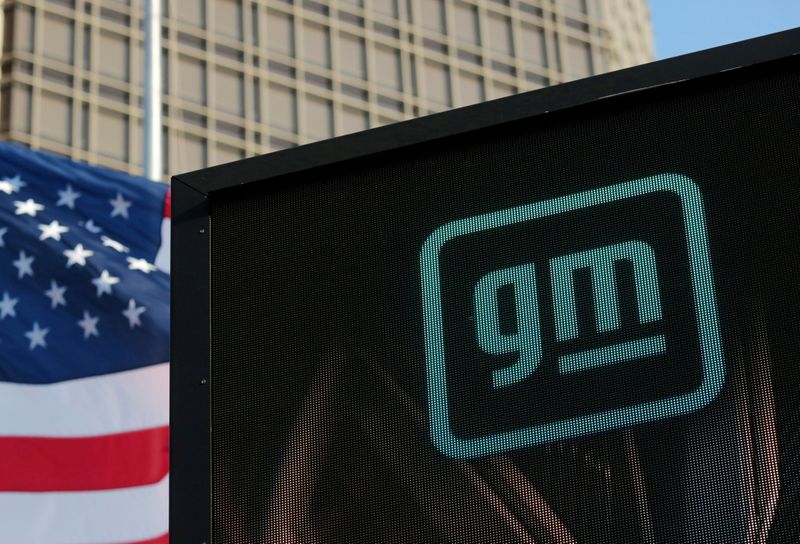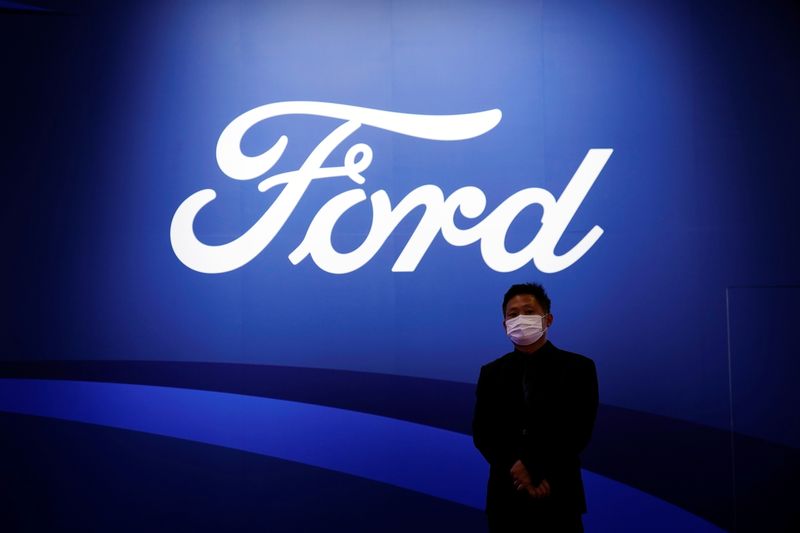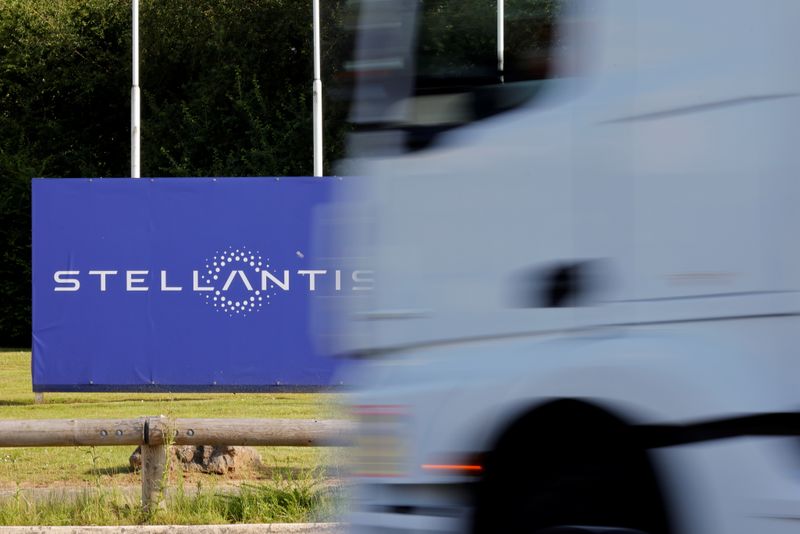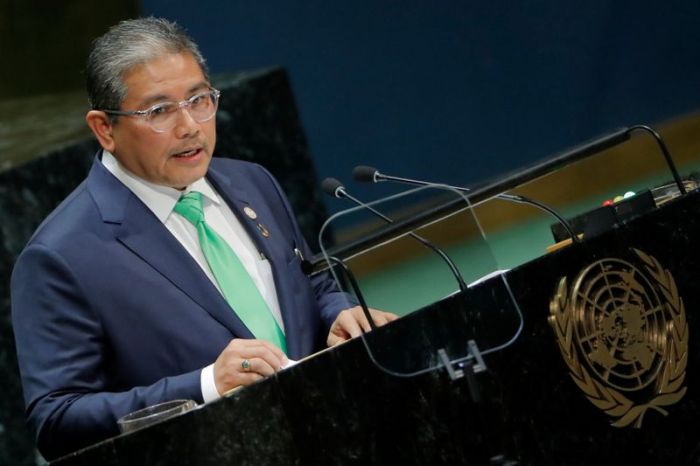WASHINGTON (Reuters) -Detroit’s Big Three automakers plan to announce on Thursday that they aspire to have 40% to 50% of new vehicle sales by 2030 be electric models as they call for billions in U.S. government assistance to meet aggressive targets, sources briefed on the matter said.
The White House is planning an event on electric vehicles and fuel economy standards with President Joe Biden and chief executives from General Motors Co, Ford Motor Co and Chrysler parent Stellantis NV. The administration this week plans to propose revisions to fuel economy requirements through the 2026 model year.
Biden will deliver remarks at 3 p.m. EDT (1900 GMT) on Thursday on the steps his administration is taking to strengthen American leadership on clean cars and trucks, the White House said. It did not say who would attend the event.
“When I say electric vehicles are the future, I’m not joking. Tune in for big news tomorrow,” Biden wrote in a Twitter post on Wednesday.
The three automakers declined to comment on Wednesday, as did the White House. Some major foreign automakers are also expected to support the aspiration target.
The administration has been pressing automakers to back a voluntary pledge of at least 40% of new vehicle sales being electric by 2030 as it works to reduce greenhouse gas pollution, Reuters reported last week.
Automakers are spending tens of billions of dollars to speed EV adoption, even though U.S. EV sales remain small, with the exception of Tesla Inc’s.
Consulting firm AlixPartners in June said investments in electric vehicles by 2025 could total $330 billion, a 41% increase from the firm’s comparable five-year investment outlook a year ago. As of now, electric vehicles represent about 2% of total global vehicle sales, and will be about 24% of total sales by 2030, the firm forecast.
Biden has resisted calls from many of his fellow Democrats to set a binding target for EV adoption or to follow California or some countries in setting 2035 as a date to phase out the sale of new gasoline-powered light duty vehicles.
Some environmental groups have been calling for enforceable requirements and tough vehicle emissions rules through 2026.
Automakers’ target includes full-battery electric, plug-in electric hybrid vehicles, which also have gasoline engines, and hydrogen fuel cell models, sources said.
The automakers will make clear in a joint statement that the aggressive EV targets are contingent on additional government support for EVs and the charging industry. The sources said the wording of the statement could still change before Thursday.
Biden has called for $174 billion in government spending to boost EVs, including $100 billion in consumer incentives. A bipartisan Senate infrastructure bill includes $7.5 billion for EV charging stations but no money for new consumer incentives.
Last month Stellantis said it was targeting over 40% of U.S. vehicles be low-emission by 2030.
GM has said it aspires to end sales of new U.S. gasoline-powered light duty vehicles by 2035, and said on Wednesday it is focused on full electric vehicles rather than plug-in hybrid vehicles. Ford has said it plans “at least 40% of our global vehicle volume being all-electric by 2030.”
The United Auto Workers union, which has been involved in White House and automaker discussions in recent weeks, has opposed EV mandates, warning it could put jobs at risk.
In a statement on Wednesday, UAW President Ray Curry said the union supports Biden’s efforts to expand EV production, but its focus “is not on hard deadlines or percentages, but on preserving the wages and benefits that have been the heart and soul of the American middle class.”
This week, U.S. regulators plan to propose revising former President Donald Trump’s March 2020 rollback of fuel economy standards. Trump required 1.5% annual increases in efficiency through 2026, well below the 5% yearly boosts set in 2012 by President Barack Obama’s administration.
Biden’s proposed rules, which would cover 2023-2026, are expected to be similar in overall vehicle emissions reductions to California’s 2019 deal with some automakers that aims to improve fuel economy 3.7% annually through 2026, sources told Reuters.
The 2026 requirements are expected to exceed the Obama-era 5% annual improvements.
The United States pledged at a global climate summit this year to reduce emissions 50% to 52% by 2030, compared with 2005 levels.
In March, a group of 71 Democrats in the U.S. House of Representatives urged Biden to set tough emissions rules to ensure that 60% of new passenger cars and trucks sold are zero-emission by 2030.
(Reporting by David Shepardson in WashingtonEditing by Dan Grebler and Matthew Lewis)


























